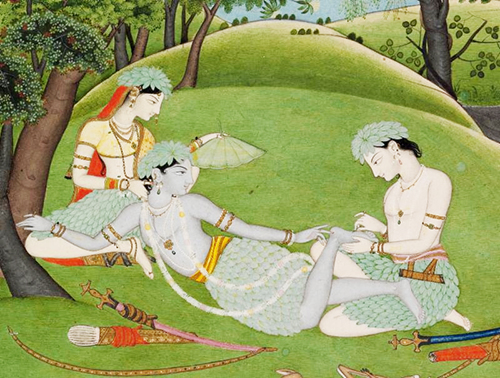CulBeat Express
2019.07.29 16:01
메트뮤지엄 인도 '라마야나' 미술 특별전(8/10-)
조회 수 1051 댓글 0
Sita and Rama: The Ramayana in Indian Painting
August 10, 2019–August 23, 2020
The Met Fifth Avenue, South Asian Exhibition Gallery

Rama, Sita and Lakshmana Begin their Life in the Forest (detail). India, Punjab Hills, kingdom of Kangra, ca. 1800-1810. Opaque watercolor, gold and silver on paper. Promised Gift of Steven Kossak, The Kronos Collections. Photo: Courtesy The Metropolitan Museum of Art
One of the major epic narratives of South Asia literature, the Ramayana(*고대 인도의 산스크리트의 대서사시), will be the focus of an upcoming exhibition opening at The Metropolitan Museum of Art on August 10.
Drawn from The Met collection and including seven promised gifts, Sita and Rama: The Ramayana in Indian Painting will showcase 30 outstanding paintings that narrate the heroic and adventurous tale of Rama's rescue of his beloved wife, Sita. The works were produced for the Rajput and Pahari courts of north India between the 17th and 19th centuries and will be augmented by four textiles. Highlights of the exhibition, which will be presented in two rotations, include a rare 19th-century painting titled Tantric Form of Monkey God Hanuman that is a new addition to The Met collection. The work is a recent gift from Steven Kossak and this is the first time it is being displayed publicly.
The exhibition is made possible by The Miriam and Ira D. Wallach Foundation Fund.
The paintings and textiles that will be on view capture the collective visual imagination of court artists in their efforts to give form to the dramatic 2,500-year-old Sanskrit narrative, which consists of more than 24,000 verses. The Ramayana is attributed to the poet-sage Valmiki (ca. 400 B.C.) and has long been popular across South and Southeast Asia. It recounts the life of Rama, a legendary prince, whose wife, Sita, was abducted by the evil king Ravenna. Together with his brother Lakshmana and his ally Hanuman, Rama assembled a massive army of monkeys and bears and traveled to Sri Lanka to confront Ravenna and rescue Sita. The Ramayana also poses deep philosophical questions about kingship, morality, and Rama's role as a divine manifestation (avatar) of Vishnu.
Other highlights include an early 19th-century masterpiece—Rama, Sita and Lakshmana Begin their Life in the Forest—that represents the sophisticated late Pahari painting tradition; a rare late 18th-century textile piece, The Combat of Rama and Ravenna; and an important group of six paintings from The Shangri Ramayana series dating from 1690 to 1710.
The exhibition is organized by Kurt Behrendt, Associate Curator in the Department of Asian Art at The Metropolitan Museum of Art.







